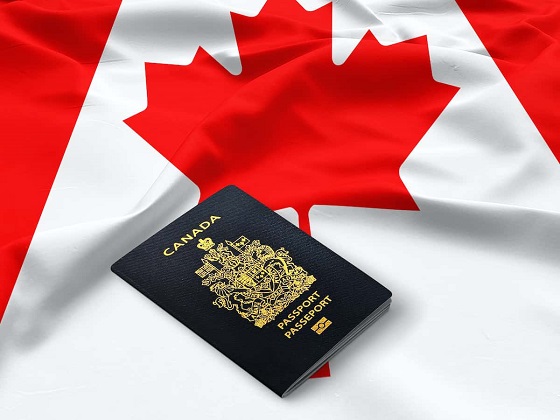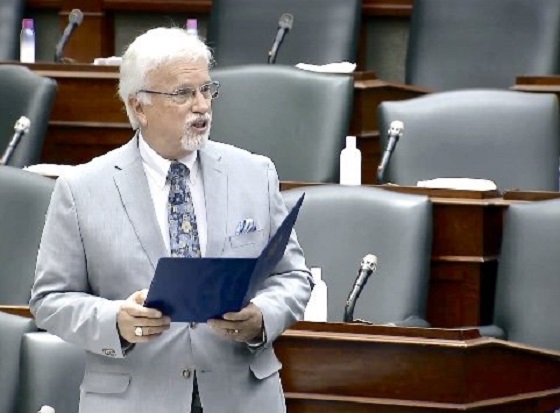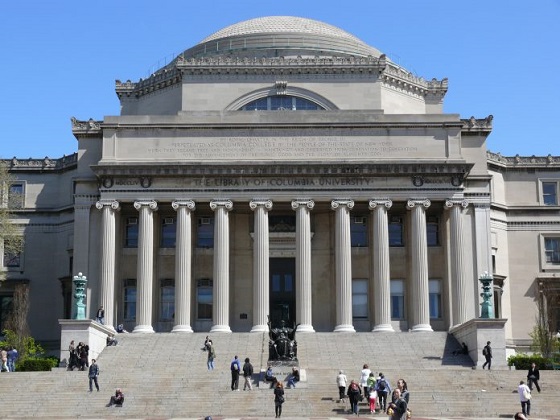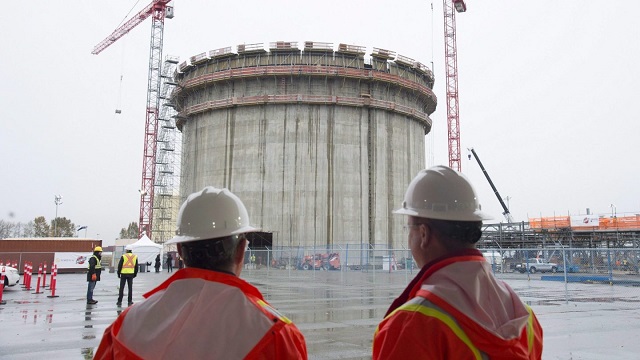Frontier Centre for Public Policy
“Indian Industry” cronyism

From the Frontier Centre for Public Policy
So, if the huge marginalized and dependent indigenous underclass does not benefit from all that money that changes hands inside the Indian Industry who is benefiting?
Former Justice Minister David Lametti’s departure from government and immediate acceptance into an expensive law firm that makes millions from indigenous issues is a recent example of what has long been called “The Indian Industry” at work.
It is unknown who first coined the term “The Indian Industry.” Many indigenous and non-indigenous writers have used the term over the decades. Indigenous author, Calvin Helin made liberal use of the term in “Dances With Dependency” as did Cree writer, Harold Johnson, in “Firewater- How Alcohol is Killing My People”
However, it was Frances Widdowson and Albert Howard’s important 2009 book “Disrobing The Aboriginal Industry” that first examined the Indian Industry in detail.
The authors chose to use the term “Aboriginal Industry”, perhaps for reasons of politeness, but they are describing the Indian Industry. They tell in detail how extensive it has become in Canada. Entire universities, law firms and virtually all Canadian institutions have become largely dependent on the money sloshing around within it. Almost all of that money comes in one way or another from taxpayers.
But they note the supreme irony that the Indian Industry is not improving the lot of the very people it is supposed to be helping – Canada’s marginalized and dependent indigenous underclass:
“Despite the billions of dollars devoted to aboriginal causes, Native people in Canada continue to suffer all the symptoms of a marginalized existence – high rates of substance abuse, violence, poverty. Disrobing the Aboriginal Industry argues that the policies proposed to address these problems – land claims and self government – are in fact contributing to their entrenchment.”
However, “Disrobing” was written in 2009, and since the Trudeau Liberals took over in 2015 the money flowing into the Indian Industry has increased dramatically in volume. In fact, that money flow, and the enormous indigenous contingent liabilities that now total $76,000,000,000 are growing so quickly – seven times higher since Trudeau took over – that the parliamentary budget officer has raised the alarm. Canada’s economic future is being compromised.
It isn’t only indigenous contingent liabilities – money owed for indigenous claims – that have grown so alarmingly, it is all indigenous spending. Reports from the Fraser Institute keep track of the shocking increases in total indigenous spending since the Trudeau Liberals took power. It is fair to say that the truly frightening federal government deficits in recent years occurred largely because of this extra indigenous spending.
And it isn’t only the largesse of the Trudeau government that has dumped money into the Indian Industry. Since 2015 it has also been the residential school bonanza. Clever lobbyists have been able to extract tens of billions of dollars from taxpayers by making highly exaggerated claims that residential schools were places of horror, where priests tortured, murdered and secretly buried thousands of indigenous children. These claims are nonsense. Although it is completely true that the residential school system was deeply flawed, and that many indigenous children were badly hurt by their residential school experience, it is also true that many received educations they would otherwise have been denied. But, more to the point, there is no evidence that even one child was murdered, or secretly buried during the entire history of residential schools. Despite that, baseless claims of clandestine deaths and secret burials have worked very well for everyone involved in the Indian Industry. Residential schools have become the Indian Industry’s single biggest money earner.
But, as Widdowson and Howard noted years ago, the Indian Industry has done nothing to solve what has always been called Canada’s “Indian problem” – namely that the great majority of Canada’s indigenous people remain far behind the mainstream on every social indicator. They are the least healthy, worst educated, most incarcerated, shortest living of any demographic by far.
They were that way before 2015, and they remain that way now. The Indian Industry, and the astounding amounts of money poured into it since 2015 haven’t changed those depressing numbers one bit.
A recent CBC investigative report on the dismal conditions at the St. Theresa Point reserve in Manitoba is a case in point. It is one of Canada’s hundreds of totally dependent reserves. Families there of as many as 23 people per house live in dilapidated housing, in a community that is almost totally unemployed and dependent. The increased money flow since 2015 appears to have only made dependency and all of its related problems – addiction, crime, domestic violence – worse.
So, if the huge marginalized and dependent indigenous underclass does not benefit from all that money that changes hands inside the Indian Industry who is benefiting?
It is people like David Lametti and Perry Bellegarde, and their law firms, universities, etc. – none of whom need special help.
And here is the second irony: The Indian Industry feeds on the human misery on display at communities like St. Theresa Point.
It needs that misery to continue to keep the money flowing.
This is not to suggest that any of the people and institutions that are part of it are deliberately perpetuating poverty, or doing anything illegal. They aren’t. They are simply picking up all of the free money our elected representatives and courts throw into the Indian Industry every day. They pick it up because we put it there.
It is probably not fair to single out David Lametti and Perry Bellegarde for their participation in this obscene waste of taxpayer money that is the Indian Industry. They are just two of many enterprising such people who have come before them, and many who will come after them. They probably convince themselves that they are doing something useful. They aren’t. They are part of an Indian Industry that fleeces taxpayers, while pretending to be solving the indigenous underclass problem, while making it worse. At a certain point, will Canadians grow tired of this game?
Because it has become abundantly clear that the federal indigenous policy that has developed over decades is a total failure. While privileged indigenous people who don’t need special attention are benefitting spectacularly, the indigenous people who do need the help are becoming more helpless and dependent all the time. The huge increase in the money dumped into uneconomic communities, like St. Theresa Point, is making things worse, not better. It is keeping young people, who should be moving to job centres, trapped in hopeless communities.
Renowned American economist and philosopher Thomas Sowell argues convincingly that simply giving money to chronically dependent people makes things worse, not better. I’m sure that Mr. Lametti and Mr. Bellegarde don’t want that to happen, but it is. And it is the Indian Industry that is making them wealthy that is doing it.
At some point the entire Indian Industry, with its racist Indian Act and brutal reserve system, will come to an end. Indigenous people living on Indian reserves now comprise only 1% of the Canadian population. Despite high birth rates on reserves, more and more reserve residents are moving away from them. By most measures only 25-40% of status Indians now live on reserves, and that percentage steadily falls.
Meanwhile, immigrants are steadily flowing into Canada. According to some estimates, Canada might have a population of 100 million by the end of the century. The percentage of the population living on reserves will become far less than 1%. Maintaining a completely separate system and bureaucracy for one tiny segment of the population will make less and less sense – especially to those millions of new Canadians, who don’t feel that they owe any special debt to indigenous people.
But while this natural process works itself out, the Indian Industry, now armed with the deeply divisive United Nations Declaration on the Rights of Indigenous Peoples (UNDRIP), is doing permanent damage to the country. We see that process now playing out in British Columbia, where their provincial version of UNDRIP- DRIPA – is wreaking havoc on their natural resources industry. It has become not only a virtual indigenous veto on any mining, pipeline or development project, it is now directly threatening basic landowner rights. In what is much like Chicago during the days of the Mafia, indigenous leaders all demand their “cut” before any project can proceed. This harmful process is spreading all across Canada, now that Canada has foolishly adopted UNDRIP.
And, in what is a perfect illustration of how the Indian Industry works, Perry Bellegard, as AFN Grand Chief, lobbied the government to bring in UNDRIP, David Lamerti, as Justice Minister, brought it in, and now Bellegrde and Lametti and their law firm benefit from it financially. Meanwhile, the taxpayer pays, and the marginalized and dependent indigenous majority remains marginalized and dependent.
Isn’t it time to end this farce? People who need education, and assistance to move to job centres should get that help. But pretending that making privileged people like David Lametti and Perry Bellegarde wealthier by dumping endless amounts of cash into Indian Industry cronyism is somehow good for indigenous people is nuts.
It isn’t. It’s bad for them, and it’s bad for Canada.
Brian Giesbrecht, retired judge, is a Senior Fellow at the Frontier Centre for Public Policy.
COVID-19
Peckford: Hallelujah! Supreme Court of Canada to hear Newfoundland and Labrador charter case

From the Frontier Centre for Public Policy
This will allow the SCC to address novel questions about the scope of mobility rights in Canada and the extent to which the government can limit Canadians’ rights to move freely around the country.
In what can only be considered a surprise move the SCC has agreed to hear an appeal of a decision of the Supreme Court of Newfoundland. Surprise because the Newfoundland and Labrador Court of Appeal refused to hear the appeal of this exact case.
For the Appeal Court it was the all too familiar excuse of the whole thing being too moot for the Court.
But now the SCC has agreed to hear the case. The parties, Kimberly Taylor and The Canadian Civil Liberties Association appealed to the court.
Here is a copy of the Civil Liberties Press Release dated April 26, 2024:
“Arbitrary travel restrictions infringe on the mobility rights of Canadians. CCLA’s challenge of Newfoundland government’s Bill 38 will continue before the Supreme Court of Canada (SCC), so that Canadians have clear, predictable, and stable answers to fundamental questions affecting their basic mobility rights.”
Back in May 2020, CCLA challenged the constitutionality of the Newfoundland government’s Bill 38 before the province’s Supreme Court. This Bill provided for a travel ban between provinces and other restrictive measures in the context of the COVID-19 pandemic. CCLA asked the Court to declare Bill 38 in violation of s.6 (mobility rights), as well as other Charter rights. CCLA also argued that the law could not be saved by s.1, which says that limits on rights must be reasonable and demonstrably justified. In September of 2020, the province’s Supreme Court found that the travel ban did violate the s.6 Charter right to mobility, but that such infringement could be justified under s.1. CCLA pursued this case before the Newfoundland and Labrador Court of Appeal. In August of 2023, the Court of Appeal refused to settle the merits of the appeal under the motive that it was moot, since the ban had been lifted. This was done despite all the parties urging the Court of Appeal to decide the appeal on the merits.
CCLA is pleased to learn that the SCC just granted its application seeking leave to appeal in this case. This will allow the SCC to address novel questions about the scope of mobility rights in Canada and the extent to which the government can limit Canadians’ rights to move freely around the country. CCLA is grateful for the excellent pro bono work of Paul Pape, Shantona Chaudhury and Mitchell McGowan from Pape Chaudry LLP in this file.”
Like the Association I am pleased that the highest court is going to hear the case. One can only assume that it will not just issue a silly moot decision given that they could have let the Court of Appeal decision of Newfoundland stand and not hear the case.
I hope the highest court considers the following given it is high time for the Constitution of This Country to be fairly applied and interpreted as written.
Courts have not the power to rewrite this sacred document. They are not omnipotent. That is for the people through its elected representatives as expressed in Section 38 of the Constitution Act 1982 in which the Charter is located—the Amending Formula.
The intent of Section 1 Of the Charter was that it could only be applied in a war, insurrection, the state being threatened circumstance. As one of the First Ministers involved and whose signature is on the original Patriation Agreement I submit this point of view was what was operative at the time of the construction of this section. All remaining First Ministers whose names are on that document are no longer with us. Sadly, no court has called me to provide my view.
This intent is clear In Section 4 (2) of the Charter:
“In time of real or apprehended war, invasion or insurrection, a House of Commons may be continued by Parliament and a legislative assembly may be continued by the legislature beyond five years if such continuation is not opposed by the votes of more than one-third of the members of the House of Commons or the legislative assembly, as the case may be.”
So, decisions that have been made concerning the Charter should only be made in this context. Numerous court deliberations here and in many western jurisdictions have considered intent in determining the legitimacy of legislation. This is not novel or new.
Hence, a glaring, fundamental mistake has occurred in interpreting our Charter. The blatant omission of considering the opening words of the Charter in any interpretation of legislation by the Courts is an abuse of the Charter, our Constitution. Where is the power provided the courts to engage is such omission? Those words are:
“Whereas Canada is founded upon principles that recognize the supremacy of God and the rule of law:”
The one reference of which I am aware in the Courts literature to any consideration of the opening words relating to God was by an Alberta Judge in a lower court foolishly indicated that the creators of the words did not identify God as being a Christian God. All the creators, the First Ministers, were Christians —that’s all. What an insult to our history and traditions and the authors?
And this has been allowed to stand?
And what about the rule of law? Little if anything has been done in considering and interpreting this point.
As for Section 1 itself of the Charter. If one can get past the previous points, which is impossible, but let’s speculate: the court in question in Newfoundland, like the courts across the land, have disfigured, misinterpreted the wording of this section —-
Rights and freedoms in Canada
The Canadian Charter of Rights and Freedoms guarantees the rights and freedoms set out in it subject only to such reasonable limits prescribed by law as can be demonstrably justified in a free and democratic society.
What is of crucial importance is ‘demonstrably justify ‘and a free and democratic society ‘—-is it not? Many try and evade confronting these concepts by emphasizing ‘reasonable ‘. But ‘reasonable ‘is qualified, if you will, with ‘as can be demonstrably justified ‘and ‘in a free and democratic society.’ This was deliberate by the creators and authors of this section.
So, as we all know such reasonable demonstration would be a cost benefit analysis, a tool used frequently by Government in considering new policies or programs —and this case especially when sacred rights enshrined in the constitution were to be taken way!!! Yet, there was none! And what about the Provincial Emergency Management organizations that were already established in all the provinces with immediate expertise. Were they consulted? Not one!
No such attempt was made, and the Governments did not conduct even a cursory cost benefit review and the courts eagerly accepted the one-sided Government narrative. Yet experts like Lt. Colonel David Redman, who had been involved in Emergency Management and had written extensively on it were never consulted!
And ‘free and democratic society? Was there any meaningful engagement of the Parliament of Canada or the Legislative Assemblies —-not really, ——only to delegate power to unelected bureaucrats and relieve the politicians of direct responsibility. Where were the Parliamentary Committees? The sober consideration of all points of view in an open public session? Of independent science? Does not free and democratic society entail such deliberations?
And to those courts / governments who talk about little time—in this Newfoundland case it was 6 months before The Supreme Court of the Province ruled and 15 months for the Court of Appeal to issue a non-decision! So much for serving the people!
As for the concept of ‘mootness ‘that has been most dramatically used by the Federal Court and the Federal Court of Appeal and The Court of Appeal in Newfoundland? This is a construct of the court not the Constitution.
It denies a citizen the right to know whether a government action to which a citizen was subjected violates the Charter. Should a court idea of mootness, refusing to rule on whether a government action of only months before overruling the people’s right to know if their rights and freedoms were violated? Is this not the role of the Court? To protect the rights and freedoms of the citizens from Government overreach? That was and is the whole point of the Charter.
Whether the Government action is presently operative or not should be irrelevant, especially when millions of citizens were involved and especially when it involved rights and freedoms protected under the Charter, our Constitution. There may be a role for mootness if a frivolous matter is established but by any measure what we are discussing is anything but a frivolous matter, even though The Newfoundland Court of Appeal in calling the whole thing ‘moot ‘had the gall to find the Government’s action of denying rights ‘fleeting.’ Courts have abdicated their solemn responsibilities to the people in the exaggerated use of such Court constructed procedures.
So the highest court can go back to ‘first principles’, and examine intent and the opening words of the Charter and place them in full context in any interpretation of the Charter. If this were done then Section 1 of the Charter would not even be in play. Constructing a hypothetical i.e. considering Section 1 of the Charter during the so called ‘covid emergency’, well, even if we do, the Government and Court reasoning would have failed as demonstrated above.
There is an opportunity through this case as well as the one in which I am involved for our highest court to get it right——to return to the full constitution and re-establish the ‘supremacy of God and the rule of law, ‘the legitimate role of Parliament, to the plain meaning of demonstrably justify, and the importance of intent in interpreting our Charter.
Is the Supreme Court of Canada up to the challenge?
Will our Constitution, our democracy be restored?
The Honourable A. Brian Peckford P.C. is the last living First Minister who helped craft the Canadian Charter of Rights
Watch – Leaders on the Frontier: Brian Peckford on Saving Canada’s Democracy | Frontier Centre For Public Policy (fcpp.org) January 20, 2022
Frontier Centre for Public Policy
How much do today’s immigrants help Canada?

From the Frontier Centre for Public Policy
Newly arriving immigrants require housing, infrastructure and services right away. But even including other construction workers with the 2 percent who are qualified, working-age artisans, immigrants don’t come close to building the housing they occupy. Along with paying taxes to support new arrivals, oppressive housing and living costs then deter procreation for many would-be parents in the existing population.
The relationship between GDP, productivity, and immigration
It is almost universally accepted that Canada needs immigration and the corresponding population increase to keep the economy going. That is how experts say we are supposed to get economic growth along with improvements in productivity and higher per capita GDP.
But how much of that is true?
First, GDP as a measure of economic activity and national prosperity has limitations. Adjusted for both inflation and the increase in Canada’s population, per capita GDP was in free fall in 2022 and 2023—at minus 2.6 and minus 3.9 respectively.
GDP says nothing about its distribution among the population. Inflation enriches those who own housing and other hard assets, but leaves behind those who do not own them. Notably, with demand overwhelming supply, immigrants’ housing needs and other requirements generate inflation and widen the gap between rich and poor.
It is also necessary to consider what GDP comprises. There is a rough and ready distinction between investment and consumption although the distinction is fuzzy. Broadly speaking, new and more efficient machinery improve productivity, enabling workers to deliver more value for the time they spend working. The consumption part of GDP includes a long list of activities necessary for sustaining life—everything from buying groceries to fixing broken windows, retailing goods made in China, and maintaining the superstructure of government.
Conventional wisdom is that immigration is necessary to make up for the decline in the home-grown population resulting from the birth rate below replacement. But that represents a vicious circle. Much of Canada’s GDP involves building homes and infrastructure, and supporting immigrants—all consumption components. Newly arriving immigrants require housing, infrastructure and services right away. But even including other construction workers with the 2 percent who are qualified, working-age artisans, immigrants don’t come close to building the housing they occupy. Along with paying taxes to support new arrivals, oppressive housing and living costs then deter procreation for many would-be parents in the existing population.
Many employers and politicians promote immigration. That is because immigrants tend to be more industrious and reliable than young home-grown Canadians. Immigrants and their children are generally prepared to work at current pay rates without clock-watching. And there is less pressure to install labour-saving equipment when a pool of people is ready and willing to work for what they get paid.
It’s also necessary to consider that for decades, technology, robots, and more efficient use of labour have been eliminating jobs. Some estimates have it that up to a third of all current jobs will disappear over the next 10 to 15 years. All this said, I look to history and other countries for how changes in population impact productivity and community well-being. In recorded history, the biggest advances in real per capita income occurred in Europe after the bubonic plague killed about half the population between 1347 and 1352. The shortage of labour made workers much more valuable. Feudalism ended and there was a huge surge in wages rates and women’s rights.
In recent times, the population of Japan has been expanding only slowly, and is declining now. In 2023, business capital investments hit a record high at US $223 billion, up 17 percent from the previous year. The question now is whether productivity gains will be enough to sustain its ageing and shrinking population. For Canada, in contrast, per capita business investment, adjusted for inflation and population, has been declining and was sharply lower in 2022-23.
There is another problem. Too many immigrants expect to take advantage of our generous welfare. It may cost $1,000 per person per month to support an immigrant who does not immediately get a job. That must be many times more than it costs to keep that person in a refugee camp.
Of course, Canada has the duty to take in refugees at risk of persecution. And, as Singapore does, employers should be able to hire immigrants for specific top-end jobs where Canada does not have the home-grown expertise.
It is no long-term answer to support people in camps. Troubled countries—Haiti, for example—need security and business investment to enable their self reliance. Countries like Canada need to generate their own wealth to make that possible and not just for the good of our own citizens. This requires diverting GDP back to the non-residential business investment that is the lifeblood of a healthy and sustainable economy.
Colin Alexander’s degrees include Politics, Philosophy, and Economics from Oxford. His latest book is Justice on Trial.
-

 Alberta1 day ago
Alberta1 day agoAlberta’s vision for passenger rail
-

 COVID-192 days ago
COVID-192 days agoPeckford: Hallelujah! Supreme Court of Canada to hear Newfoundland and Labrador charter case
-

 COVID-192 days ago
COVID-192 days agoFormer Canadian lawmaker has no regrets about refusing COVID shot despite losing his job
-

 Alberta1 day ago
Alberta1 day agoThree Calgary massage parlours linked to human trafficking investigation
-

 Uncategorized1 day ago
Uncategorized1 day agoMaking Alberta a geothermal energy leader
-

 Alberta2 days ago
Alberta2 days agoCanada’s postal service refuses to help with Trudeau’s gun ban buyback program: report
-

 conflict23 hours ago
conflict23 hours agoColumbia on Lockdown After pro-Palestinian Protesters Take Over Building, Hold Janitors Hostage
-

 Canadian Energy Centre23 hours ago
Canadian Energy Centre23 hours agoNorth America LNG project cost competitiveness








